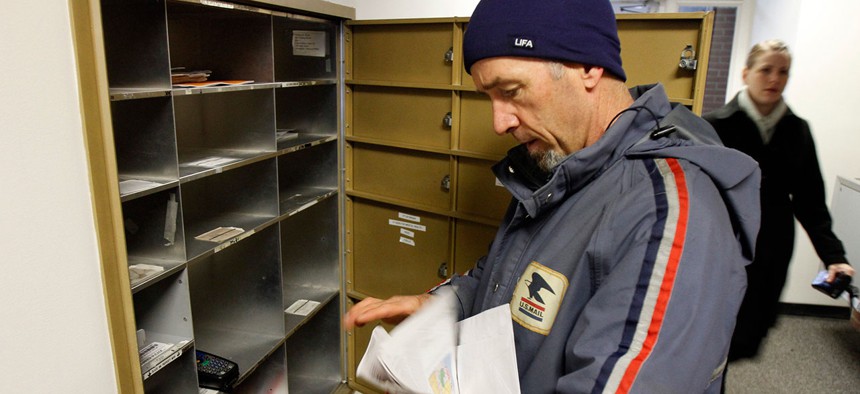
Toby Talbot/AP file photo
The Postal Service Wants to Start Using Blockchain Technology
Banks are using blockchain tech to revamp financial services. and now USPS wants in.
The US Postal Service, or USPS, isn’t known for innovation. In the digital age, the USPS has become known for being inefficient, outdated, and frustrating to deal with.
Blockchain could change this. The technology is a decentralized digital ledger that’s accessible to millions of users and cryptographically secured, making it tamper-proof. Since everyone has identical copies of that ledger, changes are added instantly and data is protected even if a few people are hacked.
The Office of the Inspector General (OIG), with help from consulting firm Swiss Economics, published a report May 23 examining blockchain technology and its impact on the postal service. The report outlined four ways the Post Office could use blockchain in the future:
- Financial Services: The Post Office already offers financial products, like international electronic money transfers, but many are limited. The report says the USPS could benefit from developing its own bitcoin-like digital currency, which it refers to as “Postcoin.” Postcoin could enable the Postal Service to expand its financial offerings into other areas, like becoming a global payment service serving unbanked customers. In 2014, Pew Charitable Trust said that financial products from the USPS would be a welcome addition for the millions of unbanked in the US.
- Identity: USPS could help verify identities on a blockchain. The USPS already does this, since it delivers your mail to you and not someone else. By connecting to a blockchain, the USPS could help you manage your offline identity as well as your digital one by storing it on an immutable ledger.
- Logistics: The Internet of Things—where average household items like stoves and thermostats are connected to the internet—is still not here, firms like IBM are exploring using blockchain to more accurately track and share information, and even transact between IoT devices. The OIG report says blockchain and IoT technology can help the Postal Service’s logistics management too. “Imagine if postal vehicles and sorting equipment could manage their own tracking, monitoring, and maintenance,” the report says. “For example, a vehicle could monitor the performance of its brake pads, determine when one is about to wear out, find out if that part is still under warranty, create a contract with the manufacturer to install a replacement part, and then pay for the brake pad and service — all autonomously.” While databases can do this now, it’s still a manual and human-intensive process. Blockchain can help all of this happen automatically, making it faster and cheaper.
- Keeping track of mail: The USPS says it delivers 509 million pieces of mail per day. In the OIG report, it says that blockchain can be used to help the USPS “identify packages and mail in the same way individuals can be identified.” If each parcel had a small sensor, blockchains could be used to manage the chain of custody between different USPS partners, like UPS and Fedex. Tracking parcels on a blockchain would also expedite customs clearance and integrate payments, logistics, and shipping into one cohesive platform.
For now, the USPS is content with just studying and learning more about blockchain technology. The report says the USPS could benefit from experimenting with blockchain-based financial products in the short term, and move on to more complex uses over time.






